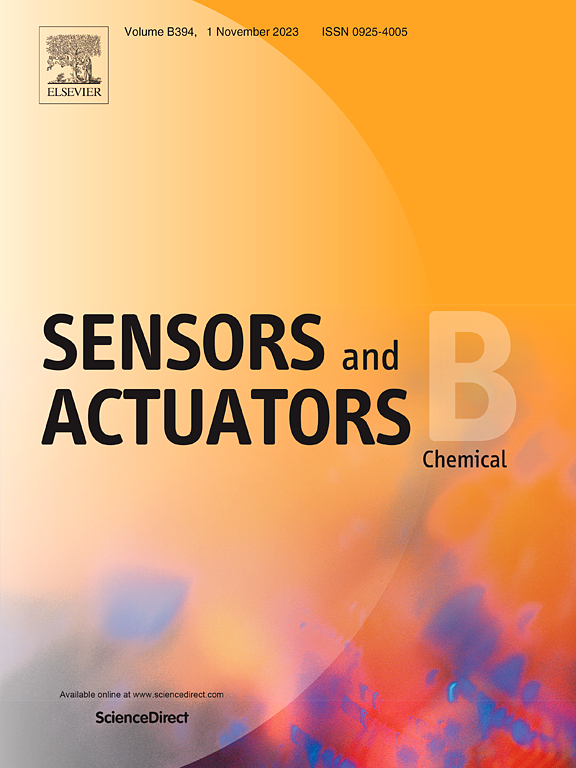Biodegradable Small-molecule-directed self-assembling nanoparticle with nanocapsule shape for tumor targeted NIR-II Fluorescence/Photoacoustic Imaging and Photothermal/NO Combination Therapy
IF 8
1区 化学
Q1 CHEMISTRY, ANALYTICAL
引用次数: 0
Abstract
Phototheranostics has recently gained attention as a promising strategy for integrating tumor diagnosis and treatment. In this study, we developed a biodegradable phototheranostic nanoplatform based on two donor (D)-π-acceptor (A) molecules, JRD1 and BAH13. They were co-assembled with DSPEG-PEG2000 to form nanoparticules with distinct morphologies: JR NPs, characterized by their strip-like structure, and BA NPs, which displayed a spherical microstructure. Both nanoparticle types exhibited excellent photothermal properties and oxidative degradability. JR NPs exhibited significant near-infrared (NIR) II fluorescence signals, while the BA NPs were more effective for photoacoustic imaging (PAI). However neither JR NPs or BA NPs alone achieved the desired imaging effect through NIR II fluorescence imaging or PAI for targeting tumor. To enhance phototheranostic performance, JRD1, BAH13, and NO donors were co-assembled with DSPE-PEG2000 yielding JR/BA/NO NPs with a nanocapsule-like microstructure, which provided strong NIR II fluorescence and PAI signals while simultaneously generating NO upon photothermal activation. In vivo imaging revealed that, JR/BA/NO NPs offered superior tumor-targeting capabilities and more precise imaging compared to JR NPs and BA NPs. Additionally, the combined photothermal and NO-releasing properties of JR/BA/NO NPs demonstrated exceptional therapeutic efficacy in tumor treatment. This study presents a novel approach to optimize the performance for phototheranostics.

具有纳米胶囊形状的可生物降解的小分子定向自组装纳米颗粒用于肿瘤靶向NIR-II荧光/光声成像和光热/NO联合治疗
近年来,光疗法作为一种整合肿瘤诊断和治疗的有前途的策略而受到关注。在本研究中,我们开发了一种基于两个供体(D) π-受体(a)分子JRD1和BAH13的可生物降解光疗纳米平台。将它们与DSPEG-PEG2000共组装,形成具有不同形态的纳米粒子:具有条状结构的JR NPs和具有球形结构的BA NPs。两种纳米颗粒均表现出优异的光热性能和氧化降解性。JR NPs表现出明显的近红外(NIR) II荧光信号,而BA NPs更有效的光声成像(PAI)。然而,单独使用JR NPs或BA NPs通过近红外荧光成像或PAI靶向肿瘤均无法达到预期的成像效果。为了提高光疗性能,我们将JRD1、BAH13和NO供体与dpe - peg2000共组装,得到具有纳米胶囊状结构的JR/BA/NO NPs,该NPs在光热活化时产生NO,同时提供强近红外II荧光和PAI信号。体内成像显示,与JR NPs和BA NPs相比,JR/BA/NO NPs具有更好的肿瘤靶向能力和更精确的成像。此外,JR/BA/NO NPs的光热和NO释放特性在肿瘤治疗中显示出卓越的治疗效果。本研究提出了一种优化光疗性能的新方法。
本文章由计算机程序翻译,如有差异,请以英文原文为准。
求助全文
约1分钟内获得全文
求助全文
来源期刊

Sensors and Actuators B: Chemical
工程技术-电化学
CiteScore
14.60
自引率
11.90%
发文量
1776
审稿时长
3.2 months
期刊介绍:
Sensors & Actuators, B: Chemical is an international journal focused on the research and development of chemical transducers. It covers chemical sensors and biosensors, chemical actuators, and analytical microsystems. The journal is interdisciplinary, aiming to publish original works showcasing substantial advancements beyond the current state of the art in these fields, with practical applicability to solving meaningful analytical problems. Review articles are accepted by invitation from an Editor of the journal.
 求助内容:
求助内容: 应助结果提醒方式:
应助结果提醒方式:


